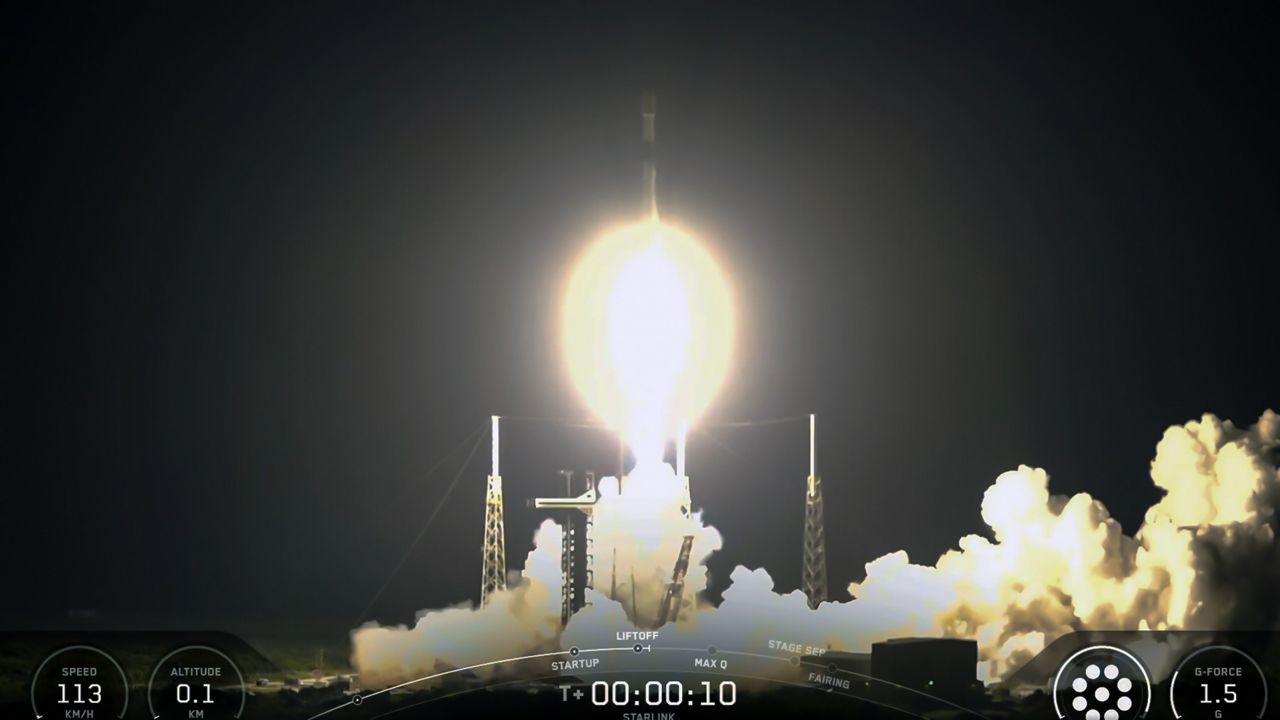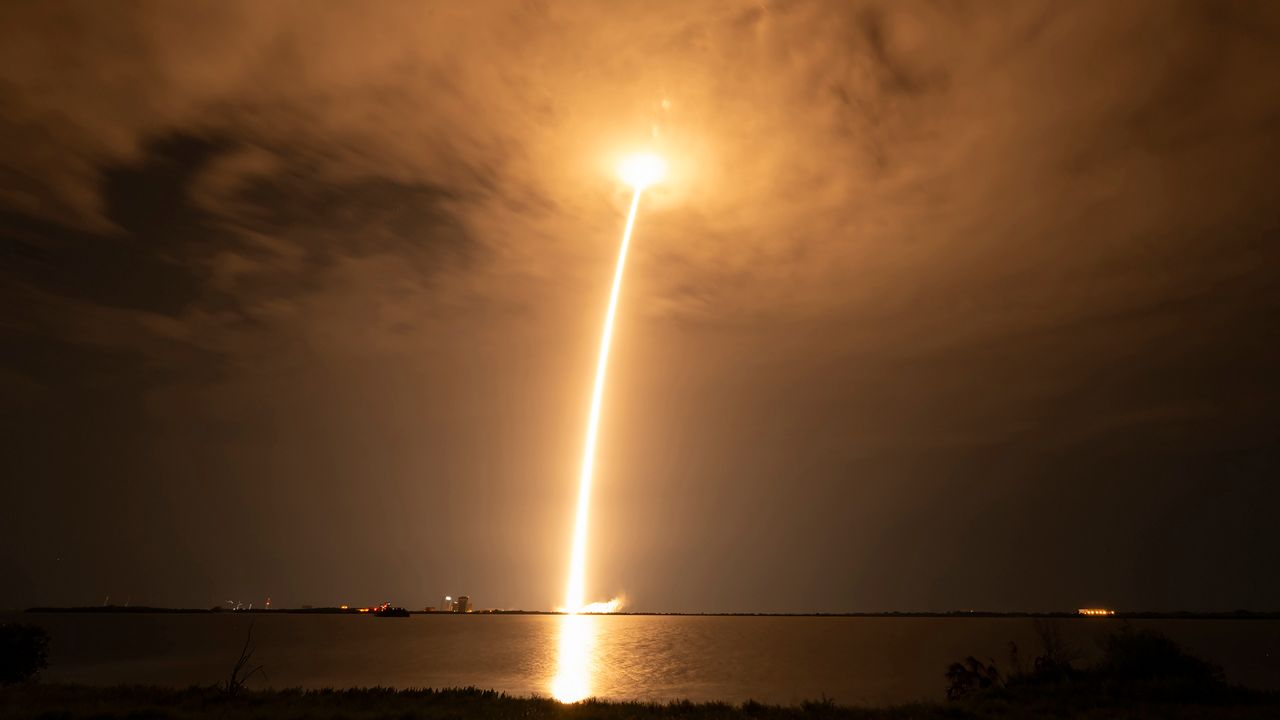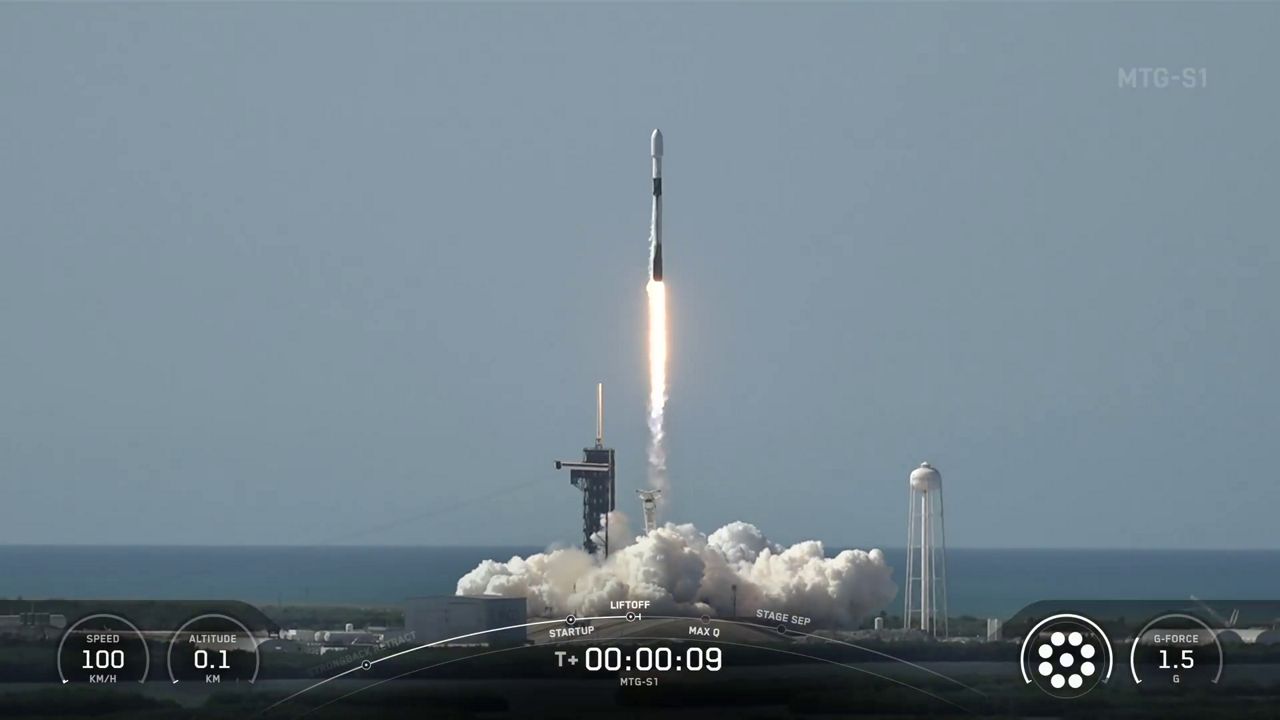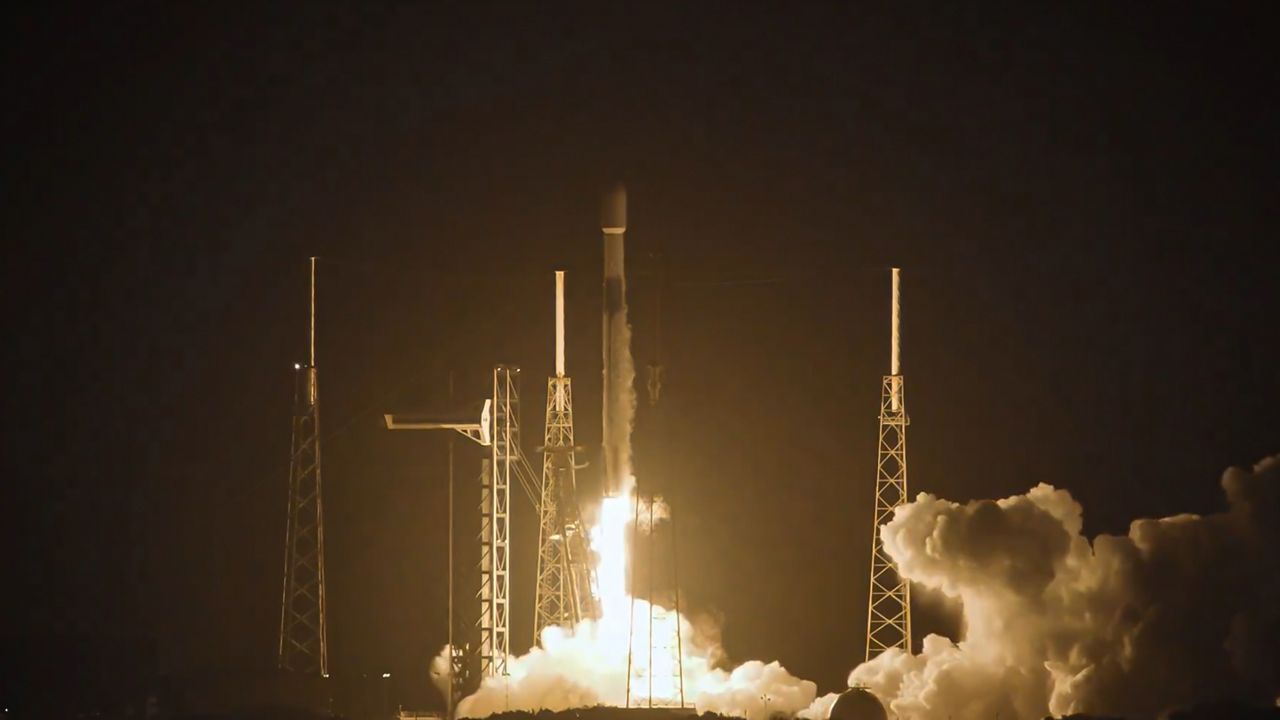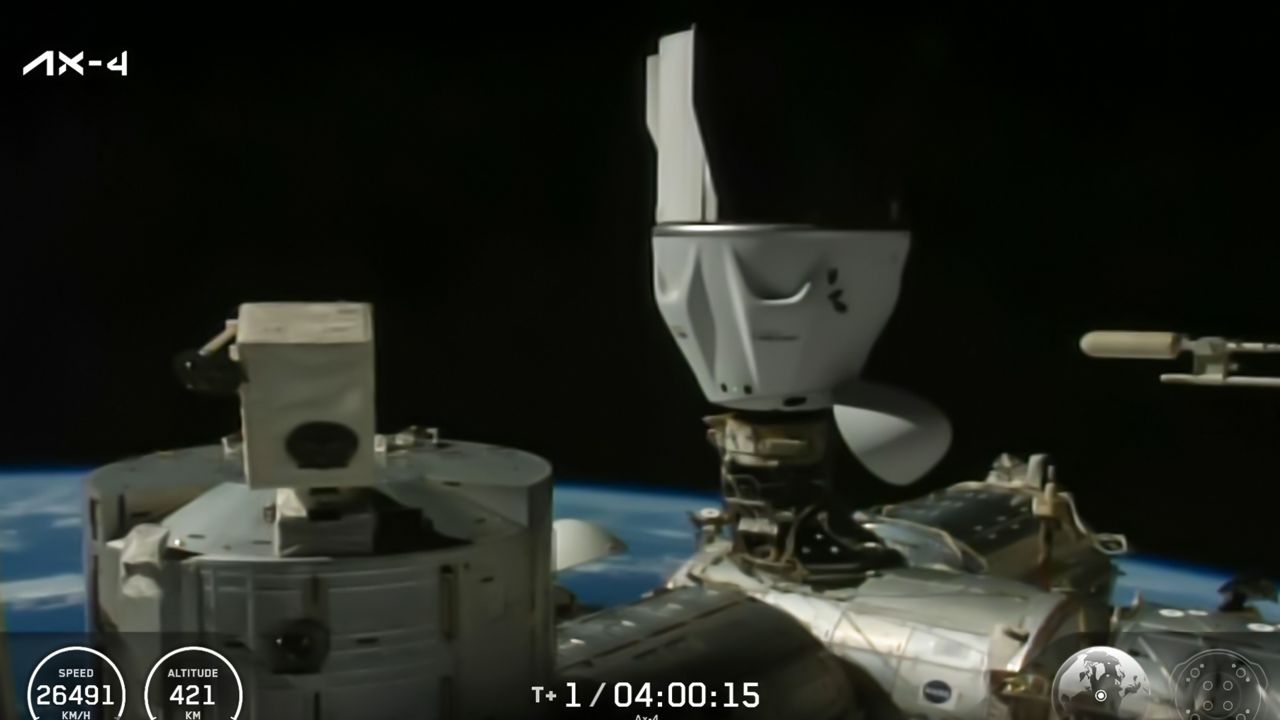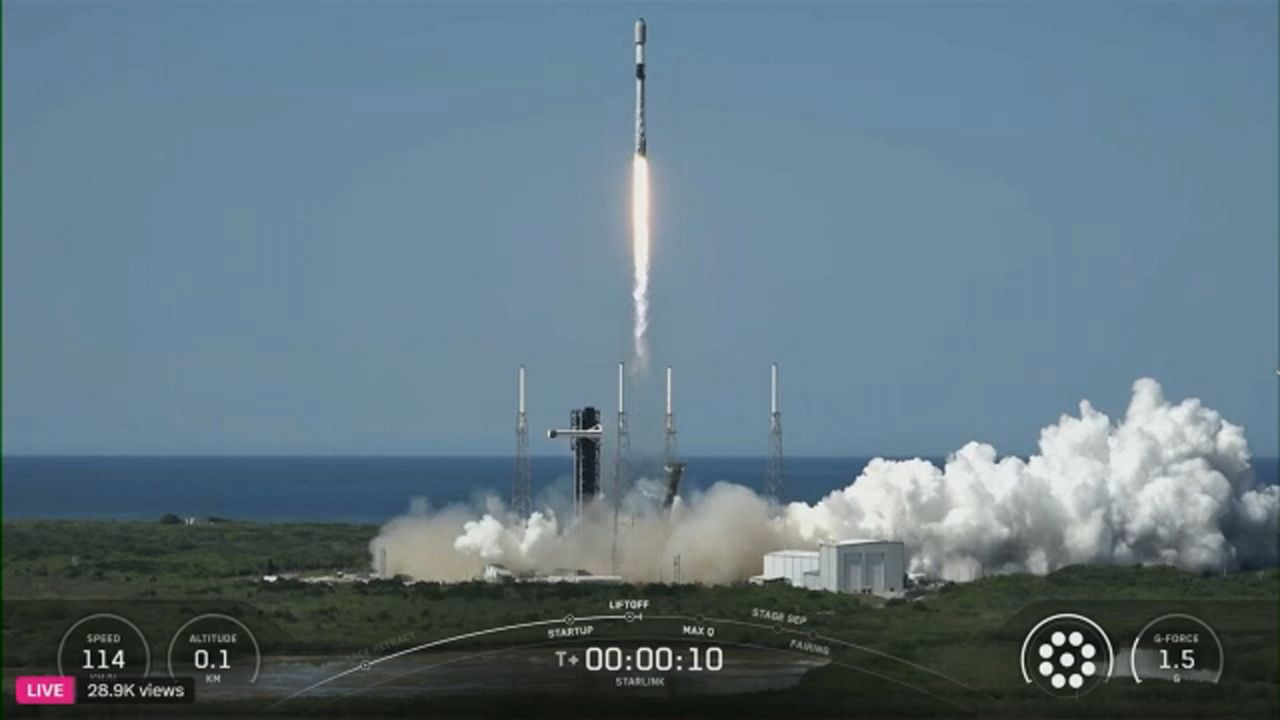CAPE CANAVERAL SPACE FORCE STATION — SpaceX was able to launch more than 20 Starlink communication satellites on Tuesday morning.
What You Need To Know
- The Falcon 9 rocket sent up Starlink 12-24 mission from Space Launch Complex 40
- The rocket booster has launched two crewed missions
The Falcon 9 rocket sent up Starlink 12-24 mission from Space Launch Complex 40 at Cape Canaveral Space Force Station at 9:05 a.m. ET, stated SpaceX.
The launch window opened at 9:05 a.m. ET and was set to close at 1:02 p.m. ET.
This means the California-based company had during that timeframe to launch its rocket.
The 45th Weather Squadron gave a “5 ➔30%” chance against liftoff, with the concerns being the cumulus cloud and surface electric fields rules.
Find out more about the weather criteria for a Falcon 9 launch.
If the launch was scrubbed, the next attempt would have been Wednesday at 8:36 a.m. ET.
Tuesday could have been a rare double launch day for the Space Coast as the Ax-4 mission was originally going to take off, but high winds forced the mission to be moved to the following day.
An even dozen
This is the 12th mission for the Falcon 9's first-stage booster B1083. Two of its previous missions were crewed launches.
- Crew-8 launch
- Polaris Dawn mission
- Starlink 6-48 mission
- Starlink 6-56 mission
- CRS-31
- Starlink 6-65 mission
- Astranis
- Starlink 13-1 mission
- IM-2 mission
- Starlink 12-17 mission
- Starlink 6-91 mission
After the stage separation, the first-stage rocket landed on the droneship Just Read the Instructions that was in the Atlantic Ocean.
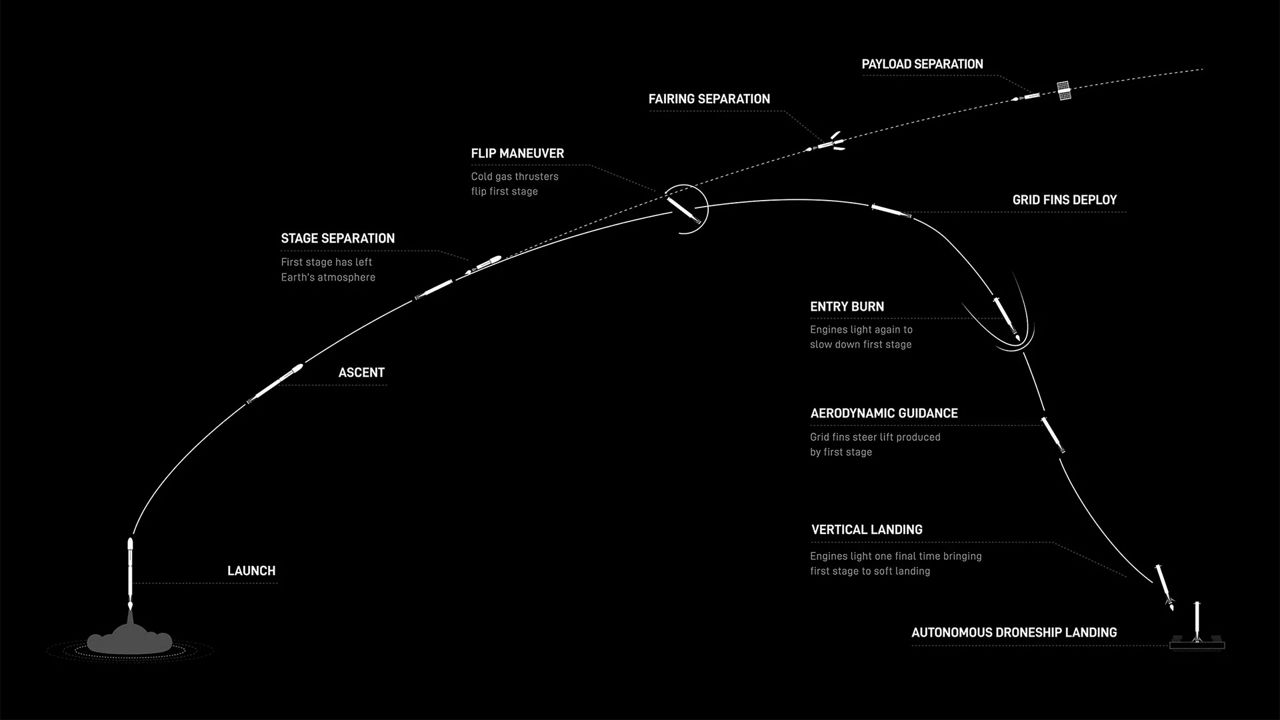
About the mission
The 23 satellites from the Starlink company, owned by SpaceX, will head to low-Earth orbit to join the thousands already there.
Once deployed and in their orbit, they will provide internet service to many parts of Earth, with 13 of the 23 having Direct to Cell capabilities.
Dr. Jonathan McDowell, of Harvard-Smithsonian Center for Astrophysics, has been recording Starlink satellites.
Before this launch, McDowell documented the following:
- 7,714 are in orbit
- 6,821 are in operational orbit







